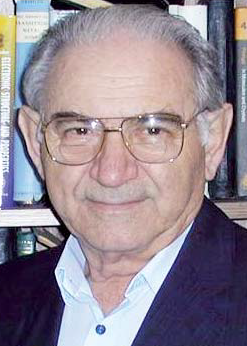
Professor (Retired) Center for Computational Life Sciences and Biology
I. B. Bersuker obtained his scientific degrees of "Candidat of Sciences" (~Ph.D.) and "Doctor of Science" (~doctor habilitat) in 1957 and1964, respectively, from Leningrad University, Chair of Prof. V. A. Fock, one of the authors of the Hartree-Fock method. From 1964 to 1993, I. B. Bersuker headed the Laboratory of Quantum Chemistry at the Institute of Chemistry of the Academy of Sciences of the USSR, Moldavian Branch (later, Academy of Sciences of Moldova), in Kishinev. He is a full Member of this Academy. From 1993, I. B. Bersuker has been a Senior Research Scientist and Professor of the University of Texas at Austin.
In his Ph.D. dissertation, he revealed the influence of core polarization on optical transitions in atoms (a 1957 paper is still cited in the literature). His main interests afterward were in the Jahn-Teller (JT) and pseudo-JT (PJT) effect theory and a variety of their applications. Among his main achievements in this field, presented by ~425 peer reviewed publications, including 15 books and about 30 major reviews, he predicted tunneling splitting in JT systems; proved that the JT and PJT effects are the only source of structural symmetry breaking in polyatomic systems; revealed the hidden JT and PJT effects; related vibronic energy level degeneracies to multi-conical intersections and Berry phase; revealed the role of JT and PJT effects in mixed-valence compounds; created the vibronic (PJTE) theory of ferroelectricity; discovered the role of spin in spontaneous polarization of crystals and new classes of multiferroics with magnetic-ferroelectric crossover; revealed a novel property of solids - orientational polarizability, resulting in giant flexoelectricity, permittivity, and electrostriction; explained the origin of polar nanoregions in paraelectric phases of ferroelectric perovskites; worked out methods of evaluation JT effect parameters from ultrasonic experiments.
In a more chemical oriented series of publications, he worked out methods of calculation of PJT induced molecular instabilities; introduced the plasticity effect in stereochemistry; revealed the origin of puckering (buckling) of molecular systems and methods of its suppression; showed that bending of linear molecules is induced by the PJT effect (not Renner-Teller effect); worked out a variety of other chemical applications of the JT and PJT effects, including the PJTE in photochemistry, the theory vibronic activation by transition metals in coordination compounds, biological systems, and mixed-valence clusters; explored the role of the PJT effect in hemoglobin oxygenation; revealed the chemical-structural origin of musk fragrance activity; suggested and worked out a method of combined quantum/classical (QM/MM) modeling for large organometallic and metallo-biochemical systems with charge transfer between the QM and MM fragments, and a more "application oriented" Electron-Conformational method of pharmacophore identification and bioactivity prediction in drug design and toxicology.
He has supervised more than 50 Ph.D. students, serves on many Scientific Councils and Editorial Boards, has received a variety of awards for scientific merit, including the Medal of Honor and the State Prize Laureate (Moldova), Medal of Scientific Merit, First Class (2021), and he is the author of the USSR registered Scientific Discovery N 202 (1979).